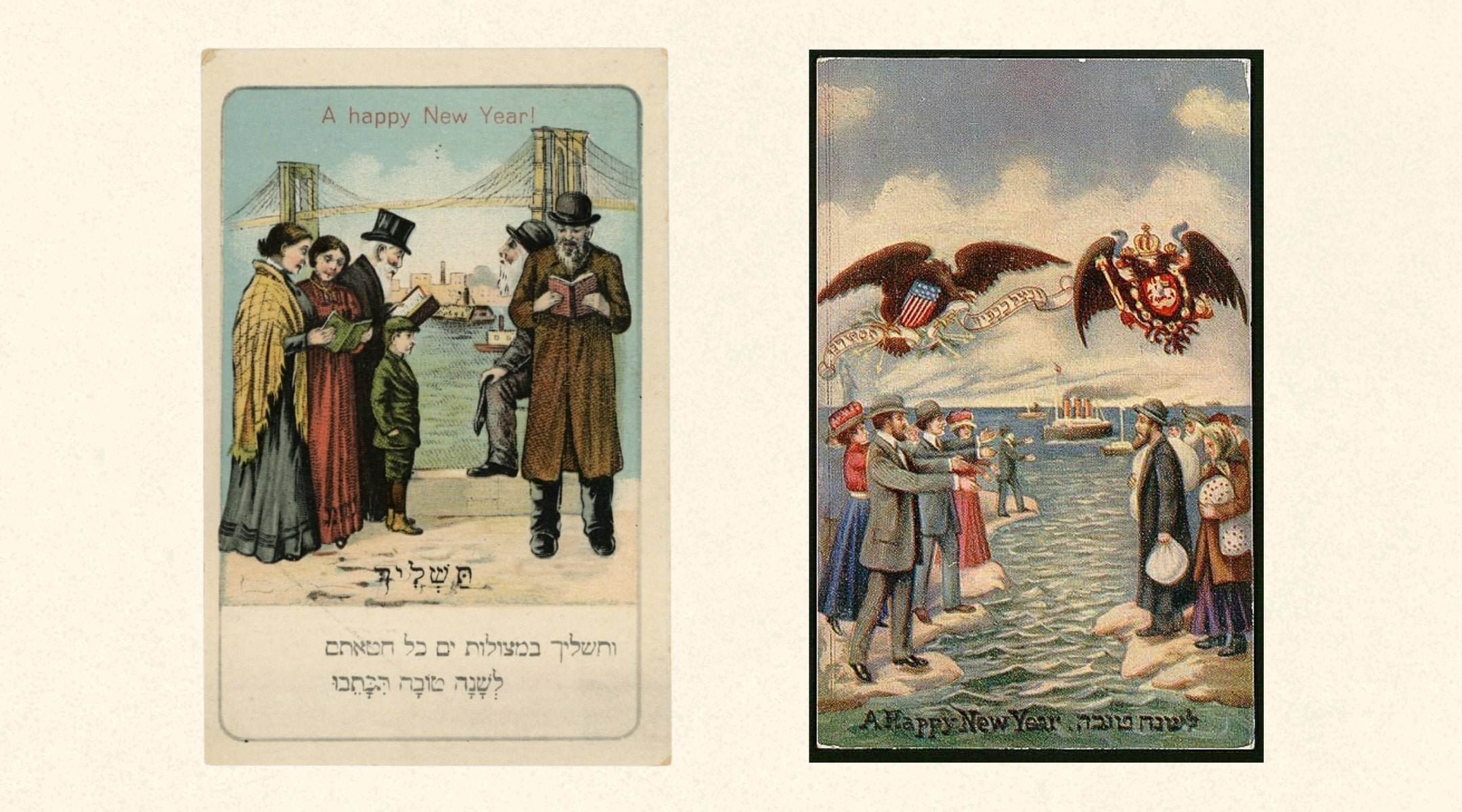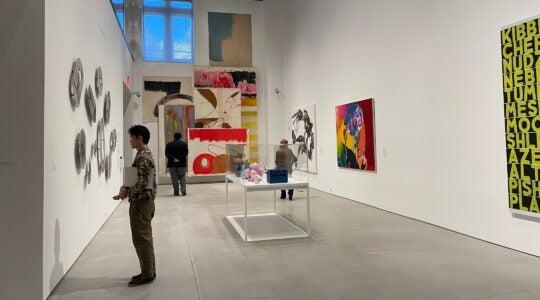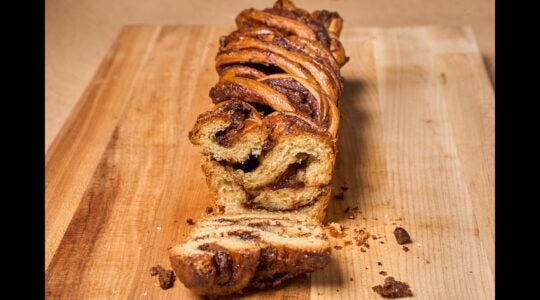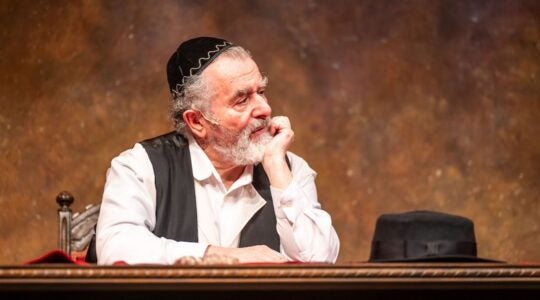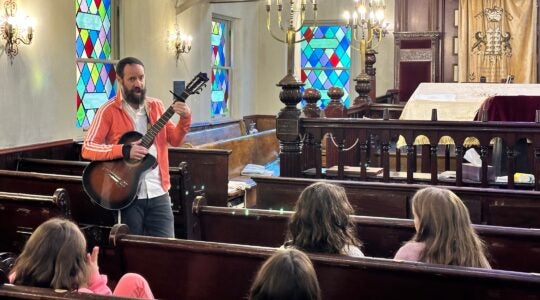In the fall of 1910, Edward Morgan, the Postmaster General of New York, made an impassioned plea to the city’s Jewish community: Send your High Holiday postcards early.
It was the height of the postcard craze in the United States, and members of the city’s Jewish community were eager to send well wishes to their loved ones for the Jewish new year. But the sheer volume of mail was a cause for concern for Morgan.
“On account of the large quantity of letters and cards of greeting deposited in the General Post Office and Post Office Stations incidental to the Jewish Holy Days falling on October 4th, 5th and 13th, this year, it is suggested that as much of this and other mail matter as possible be mailed on or before October 2nd, 3rd and 11th respectively, so that it may be handled and despatched [sic] before the Holy Days in question,” Morgan wrote in Der Morgen Zhurnal, one of the dozens of Yiddish newspapers in New York at the time.
Morgan’s plea is just one of the myriad stories that guides at the Tenement Museum are sharing this month as part a limited series of walking tours on High Holidays past. The tours — which include a cooking demonstration led by culinary historian Sarah Lohman — explore how Jewish families observed Rosh Hashanah and Yom Kippur back when the Lower East Side teemed with Jewish immigrants.
“This tour is based on all these primary sources that we found around how people celebrated the High Holidays in the turn of the century period, when this neighborhood was the largest Jewish community in the world,” said Kat Lloyd, vice president of programs and interpretation at the Tenement Museum.
The two-hour walking tour, given on Sept. 14, 18, 21, 25 and 28, will take participants through the apartment of Harris and Jenny Levine, the owners of a home-based garment factory who were expectant parents as Rosh Hashanah approached in the fall of 1892. Attendees will also visit the home of Abraham and Fannie Rogarshevsky, immigrants from Lithuania who were employed in New York’s sweatshops.
The tenement apartments have been reimagined as they would look for the High Holidays. A round challah, for example, sits on the counter of the Levines’ kitchen, and a turn-of-the-century ticket to High Holiday services is displayed in a glass case. Barely legible, the slip of moldy paper, which was discovered during a renovation of the museum, advertises Rosh Hashanah and Yom Kippur services at an Orchard Street synagogue.
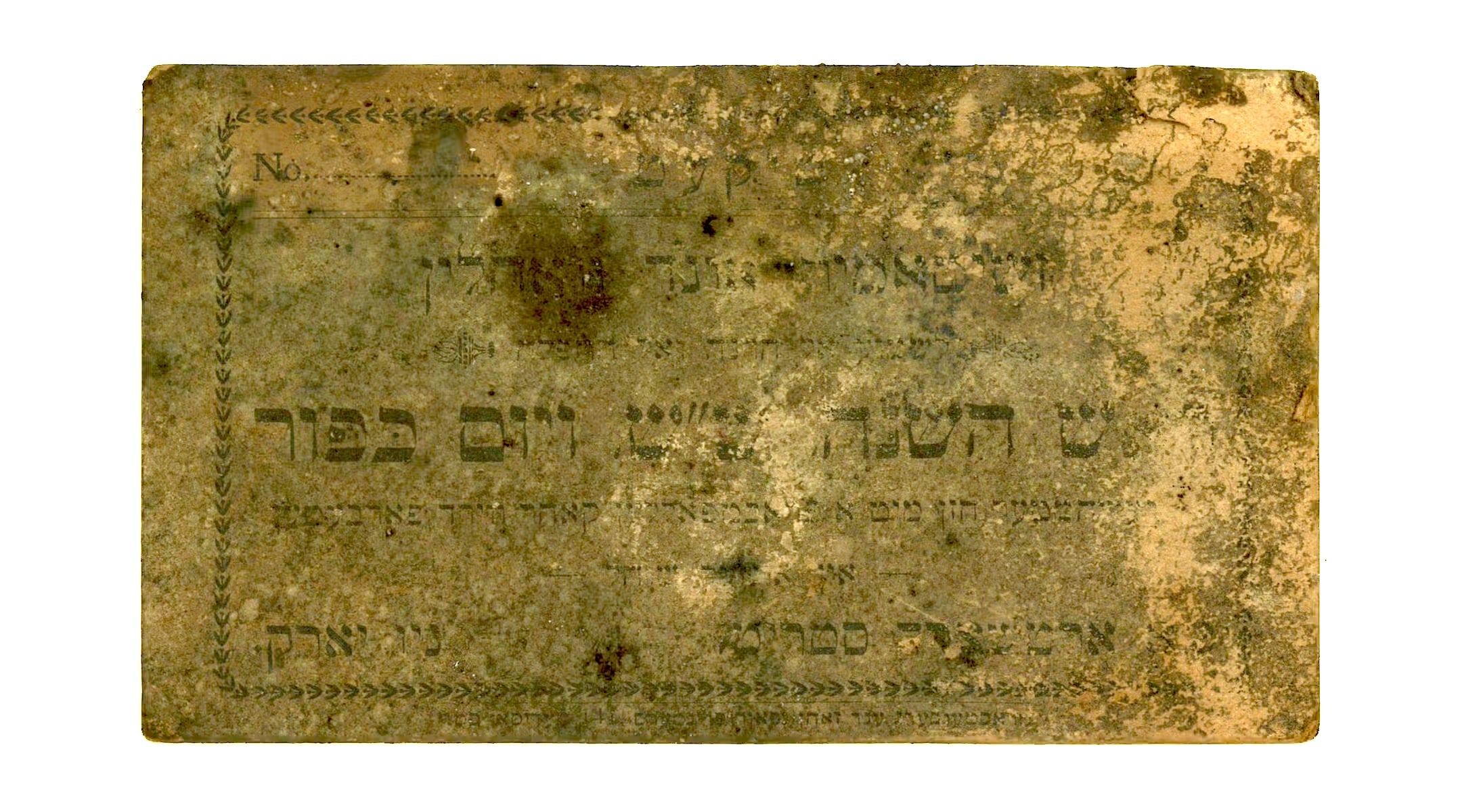
A barely legible ticket to Rosh Hashanah and Yom Kippur services at an Orchard Street synagogue. (Courtesy Tenement Museum)
The Tenement Museum has offered tours incorporating the Levine family apartment since the 1990s, though in recent years, digitization efforts and new genealogical research have brought more information about the family to light, including the Yiddish names of Jenny and Harris: Shayndel and Hirsch. The new details about the Levines inspired the museum to create this special tour.
The walking tour begins outside the Tenement Museum (97 Orchard St.), where participants are asked to imagine Lower East Side’s bustling commercial activity ahead of the High Holiday season, with the streets full of pushcart vendors selling fruits, postcards and clothing. On a preview tour, Lloyd, who also served as a guide, asked us to picture how hundreds of thousands of mostly Eastern European Jews — or three-quarters of the 2.5 million Jews who immigrated to the United States between 1880 and 1920 — could possibly all fit in the area’s small, if numerous, synagogues. She explained how saloons, movie theaters and storefronts were temporarily converted into congregational spaces during the most popular time of year for Jewish worship.
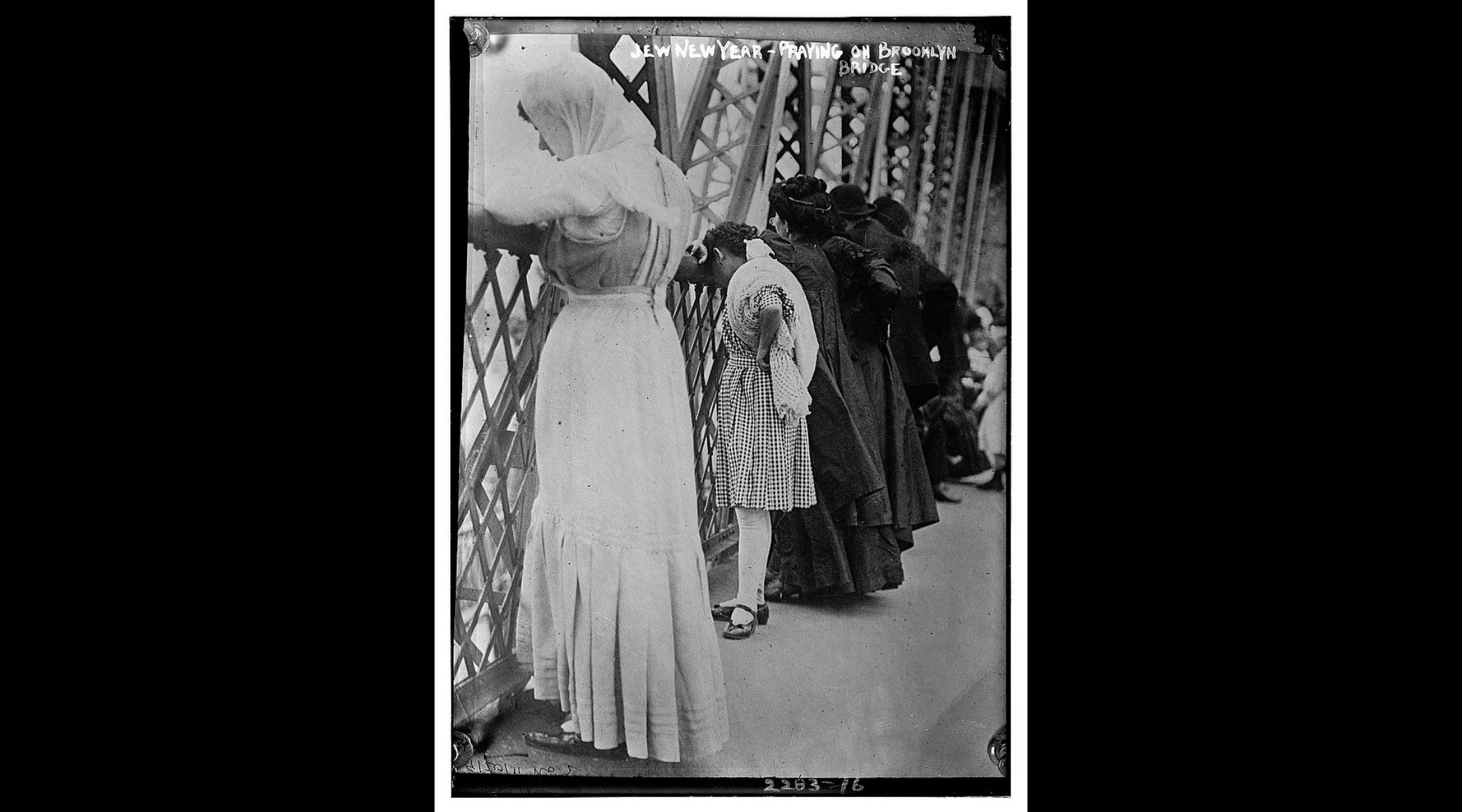
Women pray on the Brooklyn Bridge during Rosh Hashanah, c. 1909. (George Grantham Bain, courtesy Library of Congress)
“The phenomenon was so widespread and well known that, within the community, they called it ‘mushroom synagogues’ for how fast they sprung in preparation for the High Holidays,” Lloyd said. “Any space could be transformed, which, I think really underpins the solemnity and the intensity of the period.”
The tour concludes with a sweet treat: Lohman will bake a seasonal cake from Hinde Amhanitski’s 1901 Yiddish cookbook, “A Manual for Cooking and Baking” — the first cookbook published by a woman in Yiddish in the United States.
The Tenement Museum is running an additional, High Holiday-focused tour for families on Sept. 21. Featuring costumed actors reenacting Rosh Hashanah traditions, the two-hour building tour is also focused on the Rogarshevskys, along with the Greek Jewish Confino family. The program will conclude with a Rosh Hashanah greeting card-making activity — just be sure to mail those new year’s greetings early!
For more High Holiday events around the city, check out our holiday roundup here.
The New York Jewish Week brings you the stories behind the headlines, keeping you connected to Jewish life in New York. Help sustain the reporting you trust by donating today.
